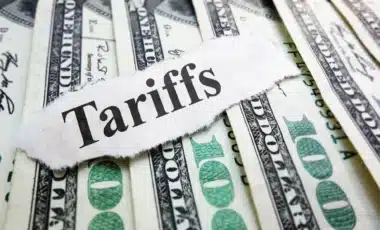U.S. wholesale prices declined by 0.5% in April, marking the largest drop in five years and defying expectations amid ongoing trade policy shifts. This unexpected downturn in wholesale inflation suggests that pricing pressures across the supply chain may be softening more than anticipated, despite ongoing uncertainty in international trade dynamics.
According to AP News, the decline came as a surprise to many economists who had forecast modest gains, raising questions about the near-term impact of recent economic policies. Although tariffs continue to shape the broader commercial landscape, their influence on producer-level prices has so far revealed little about future trends.
Producer Prices Fall Despite Trade War Tensions
The producer price index (PPI), a key indicator of inflation at the wholesale level, fell by 0.5% from March to April, according to the U.S. Labor Department. This is the first monthly decline since October 2023, and the largest single-month decrease in five years. On an annual basis, PPI rose 2.4%, a notable slowdown from the 3.4% gain recorded in March.
Economists had expected a modest increase in producer prices for the month. The unexpected decline suggests easing cost pressures across several categories, despite the prevailing impact of U.S. tariff policies.
Services and Food Prices Post Record Declines
The sharp fall in wholesale prices was driven by a 0.7% decline in prices for services—the largest on record since the government began tracking the data in 2009. The drop is attributed to shrinking profit margins at both wholesale and retail levels, indicating pressures on pricing power across the distribution chain.
Food prices also posted a significant decline of 1%. Notably, egg prices dropped 39% from March, though they remain 45% higher than a year earlier, driven by supply disruptions linked to outbreaks of avian flu.
Tariffs Rolled Back Amid Unexpected Price Slowdown
On May 13, President Donald Trump announced a significant de-escalation in the U.S.-China trade war, unexpectedly reducing tariffs on Chinese products from 145% to 30%.
In response, China lowered its retaliatory tariffs on American imports from 125% to 10%. The move marks a dramatic shift in trade relations with China, the third-largest source of U.S. imports.
While many economists had predicted that these tariffs would eventually push prices higher, the latest figures suggest that their inflationary effects have yet to materialize.
Economists Warn Inflation May Rebound as Tariff Effects Lag
Core PPI, which excludes the often-volatile food and energy categories, dropped 0.4% in April. On a year-over-year basis, core prices increased 3.1%, continuing a gradual deceleration trend. Earlier this week, the Labor Department reported that consumer prices (CPI) rose 2.3% in April compared to the same month in 2024—the smallest year-over-year increase in more than four years.
This reinforces the broader pattern of easing inflation across both wholesale and consumer segments. Despite the soft numbers, many analysts remain cautious. Economists have consistently warned that the impact of Trump’s tariffs may take time to filter through the supply chain and could become more visible by June or July.
In a commentary, Sal Guatieri, senior economist at BMO Capital Markets, wrote:
Tariffs have yet to make much of a mark on pricing, though it’s likely just a matter of time.
His view reflects a growing consensus that while price data appears tame for now, the economic consequences of aggressive trade policy may only be temporarily delayed.









